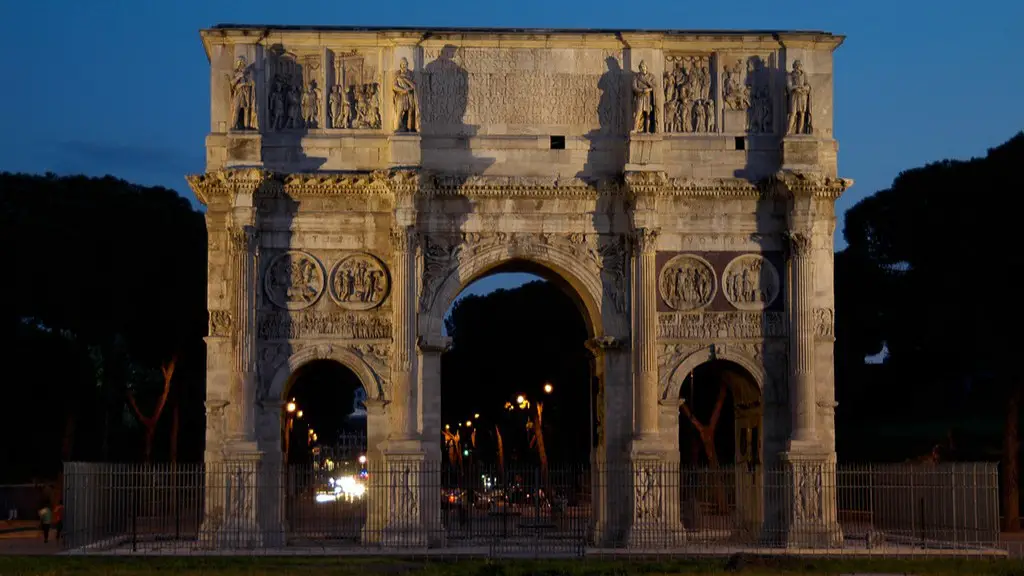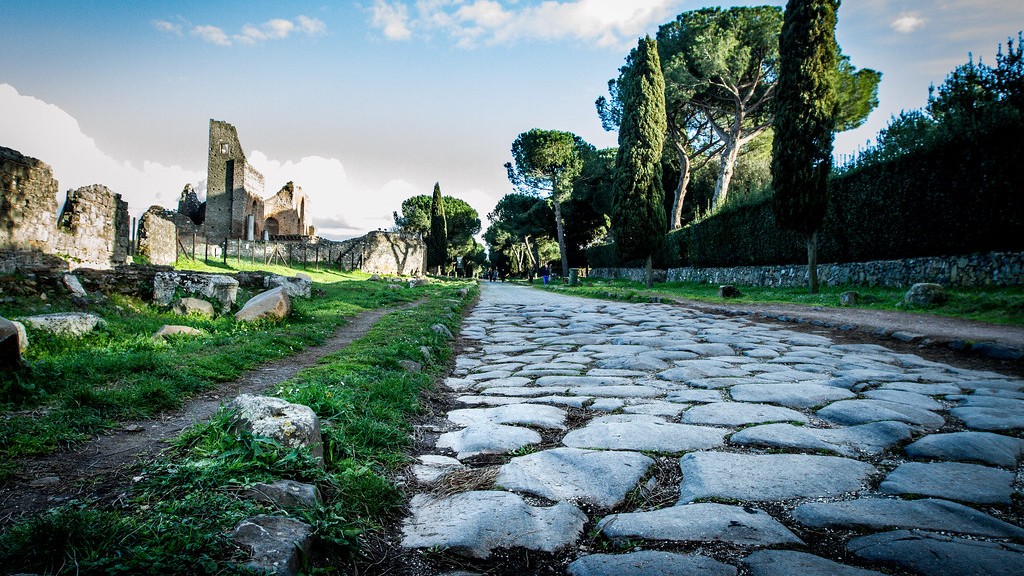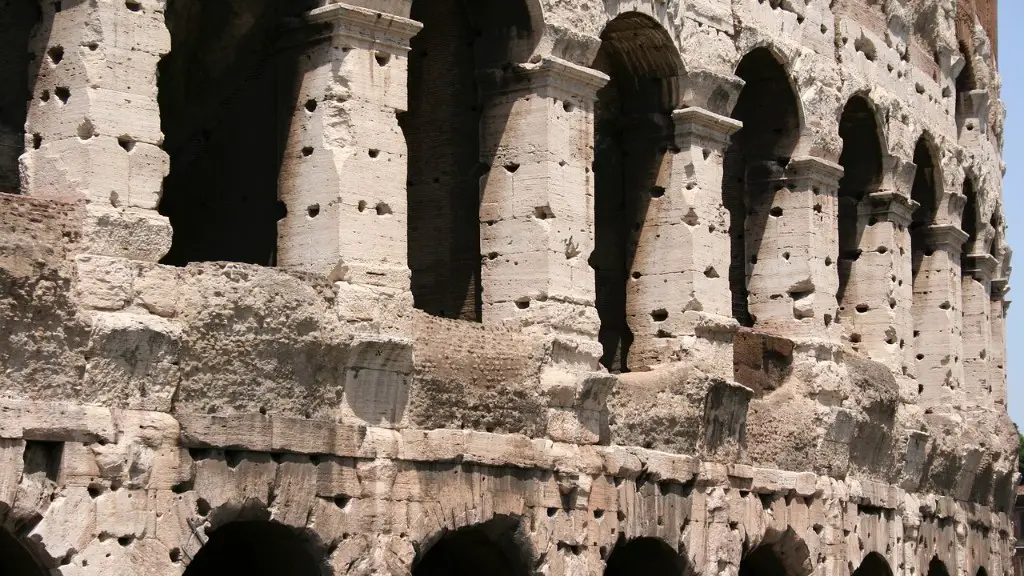The Roman Empire was one of the most powerful empires of the Ancient World. It was known for its impressive architecture, advanced technologies, and a vast and diverse culture. But what was everyday life in the Roman Empire like, particularly for ordinary citizens? What were their living conditions?
In Ancient Rome, the vast majority of people were poor and lived in crowded, dirty living conditions. Most people were employed as manual laborers, and their pay – if any – was low and didn’t go very far. Food was, of course, abundant in Rome, but it was often expensive, especially grain and fruit. Meat, on the other hand, was relatively plentiful and affordable. The wealthy, who made up a very small portion of the population, lived in large villas and enjoyed luxuries – such as servants, running water, and heated baths – that the average citizen could scarcely imagine.
In addition to everyday poverty, the people of ancient Rome had to deal with disease and malnutrition, which were rampant. Malnutrition was especially prevalent among the poor, who often lived in unhygienic conditions and didn’t have access to proper healthcare. The most common diseases in Rome included malaria, dysentery, typhoid fever, and smallpox. Poor sanitation was also a factor, as many people had limited access to running water, and open sewers were a breeding ground for disease.
Living conditions in ancient Rome were not ideal for most citizens, but there were a few bright spots. For instance, the Roman government provided basic housing for the poor and took steps to improve sanitation in the city. Roman law also gave everyone, regardless of rank or status, some basic rights and protected them from violence and exploitation.
Despite these efforts to improve the lives of the Roman people, the vast majority of the population didn’t experience the same level of comfort and security that the elite enjoyed. There were no social safety nets, and those who fell on hard times could find themselves in dire straits. The poor in Ancient Rome were largely at the mercy of fate and their own determination.
Religious practices in Ancient Rome
Religion was a major part of life in Ancient Rome, and the gods and goddesses of the Roman pantheon were worshipped in public and private. Religion was embedded in the culture, and citizens prayed to the gods and goddesses for protection, health, and good fortune. It was also believed that the gods had the power to intervene in the lives of mortals, and this belief gave people hope in difficult times.
The Romans celebrated numerous religious festivals throughout the year. One of the most popular was the Festival of Saturnalia, a winter celebration in honor of the god Saturn that lasted for several days. During the festival, many people participated in public feasts and gave gifts to one another. As part of the festivities, slaves were allowed to take part in the celebrations, and some were even given temporary freedom.
Religious beliefs in Ancient Rome also centered around interpreting the will of the gods. The Roman people believed in a form of divination, or fortune telling, known as haruspicy. People believed that by examining the entrails of animals, a priest could divine the intentions of the gods and foretell the future. This practice was widely used in Roman society, from the elite to the everyday citizen.
Though religion was an important part of life in Ancient Rome, most citizens did not follow any particular religion. Roman religion was very tolerant, as they believed that all gods – even those from foreign cultures – should be venerated. This allowed many different religious beliefs and practices to exist in the Roman Empire.
Legal system in Ancient Rome
The legal system in Ancient Rome was complex, but it was also the most advanced of its time. Roman law was based on a lengthy set of statutes and laws that offered citizens some protection and redress should they be wronged. This system allowed people to appeal their cases and even received compensation from wrongdoers.
The Roman legal system was also sophisticated in its structure. It was divided into two main branches: civil law and criminal law. In civil law, two parties would go before a court and adjudicate a dispute, and the court would decide who was right or wrong based on evidence and witnesses. In criminal law, the courts had to determine guilt or innocence in cases of murder and other crimes.
Roman laws also offered protection to marginalized groups in society, such as slaves and women, who often had few other rights. Women, for instance, had the right to own property and bequeath it when they died. Slaves, too, were entitled to certain legal protections, such as the right to a trial and the right to appeal their sentence.
The Roman legal system was far from perfect, but it was a vast improvement over what existed in other parts of the world at the time. Its structure was so successful, in fact, that many of its principles and laws were adopted and adapted by many modern legal systems.
Governmental Structure in Ancient Rome
Governmental structure in Ancient Rome was complex and hierarchical in nature. At the top of the social ladder was the emperor, who held ultimate power over the empire. The emperor had the authority to issue orders and laws, and he was aided by a network of governors and counselors who helped direct and manage the day-to-day functioning of the Roman state.
Other branches of government in Ancient Rome included the Senate and the Roman assemblies. The Senate was made up of members of the wealthy elite, and its primary purpose was to advise the emperor on matters of state. The assemblies, on the other hand, were open to all citizens, and their primary role was to pass laws and elect magistrates.
The Roman government also included an extensive bureaucracy, which managed the day-to-day running of the empire. Bureaucrats were responsible for collecting taxes, managing the imperial finances, and making sure that orders from the emperor and the Senate were followed. This bureaucracy was essential in running the Roman Empire and ensuring its success.
Military Structure in Ancient Rome
The Roman military was an essential component of the Roman Empire. It was an extremely efficient fighting force and was responsible for expanding the boundaries of the empire and protecting its citizens. The Roman army was led by a general, who was appointed by the emperor. Under the general were various officers, who commanded the different military units within the army.
The Roman army was divided into legions, which usually numbered around 5,000 men. Each legion was made up of various parts, including infantry, cavalry, engineers, and signalers. The engineers, in particular, played an important role in constructing roads and buildings, as well as siege weapons.
The Roman military was well-trained and equipped, and its success in battle was largely due to its organization and discipline. The Romans were also innovative in their military tactics and weaponry, which gave them a decided advantage over their enemies on the battlefield.
Conclusion
The living conditions in Ancient Rome were harsh and difficult for most citizens, but there were some bright spots. The Roman government took steps to improve sanitation and provide basic housing for the poor, and the people were protected by a sophisticated legal system. Religion also played a major role in everyday life, as did the powerful and organized Roman military. Overall, Ancient Rome was a complex and vibrant society that still has an impact today.





